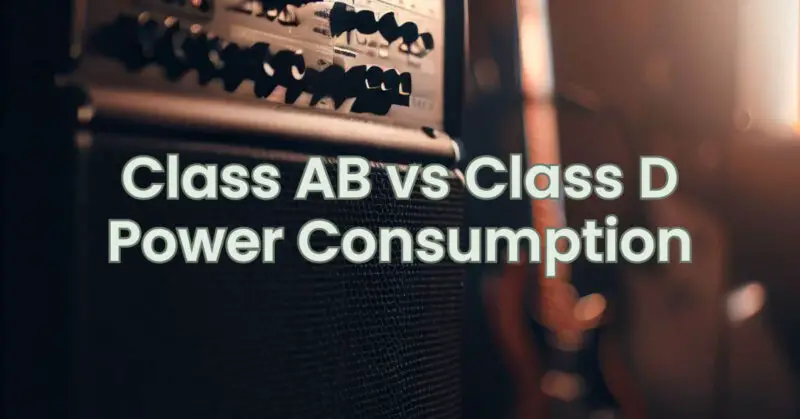When it comes to audio amplification, power efficiency is a critical factor to consider. Class AB and Class D amplifiers are two commonly used amplifier classes with distinct power consumption characteristics. In this article, we will delve into the power consumption of Class AB and Class D amplifiers, exploring their operational principles, efficiency levels, and real-world implications. By understanding their differences, we can make informed decisions about the most suitable amplifier class for our specific requirements.
Class AB Amplifiers: Class AB amplifiers operate by biasing the output transistors at a small quiescent current, allowing them to handle both positive and negative halves of the audio waveform. This design enables Class AB amplifiers to provide improved linearity and lower distortion compared to Class A amplifiers while maintaining a reasonable level of power consumption.
Power Consumption: Class AB amplifiers exhibit a higher level of power consumption compared to Class D amplifiers. Even at idle or low volume levels, Class AB amplifiers draw a significant amount of power. This continuous power consumption is due to the presence of biasing currents and the continuous operation of output transistors, regardless of the audio signal being amplified. Consequently, Class AB amplifiers can consume more power, generate more heat, and be less power-efficient compared to Class D amplifiers.
Efficiency: Class AB amplifiers typically operate at around 50% efficiency. This means that roughly half of the power drawn from the power supply is converted into useful output power, while the other half is dissipated as heat. While this efficiency level is acceptable for many audio applications, it results in relatively higher power consumption and limits their suitability for applications that require high power output or battery-operated devices.
Class D Amplifiers: Class D amplifiers employ a different approach to audio amplification, utilizing a switching technique to rapidly switch the output transistors between fully on and fully off states. This switching operation allows Class D amplifiers to achieve high efficiency levels and significantly reduce power consumption.
Power Consumption: Class D amplifiers are renowned for their high power efficiency. By switching the output transistors between on and off states, they minimize power dissipation and draw only the necessary power from the power supply to reproduce the audio signal. As a result, Class D amplifiers consume significantly less power compared to Class AB amplifiers, particularly when amplifying low to moderate volume levels.
Efficiency: Class D amplifiers can achieve efficiency levels of up to 90% or higher. This means that a large portion of the power drawn from the power supply is effectively converted into useful output power, resulting in minimal power wastage and heat generation. The high efficiency of Class D amplifiers makes them particularly well-suited for applications that require high power output, such as sound reinforcement systems or subwoofers, where energy efficiency is crucial.
Real-World Implications: The power consumption and efficiency differences between Class AB and Class D amplifiers have real-world implications for various applications. In situations where power efficiency is a priority, such as battery-powered devices or energy-conscious installations, Class D amplifiers offer clear advantages. Their ability to deliver high power output while minimizing power consumption makes them an ideal choice.
However, it’s worth noting that power consumption and efficiency levels can vary among different amplifier models and manufacturers within each class. Therefore, it is essential to consider the specific amplifier’s specifications and performance characteristics when evaluating power consumption and efficiency.
In the battle of power consumption, Class D amplifiers emerge as the clear winner, offering high efficiency and reduced power consumption compared to Class AB amplifiers. The switching operation of Class D amplifiers allows them to achieve significantly higher power efficiency levels, minimizing power wastage and heat generation. This makes Class D amplifiers well-suited for applications where energy efficiency is a priority.
However, the choice between Class AB and Class D amplifiers should consider other factors such as desired sound quality, budget, and specific application requirements. By understanding the power consumption characteristics of each amplifier class, individuals can make informed decisions to ensure optimal performance and power efficiency in their audio systems.


